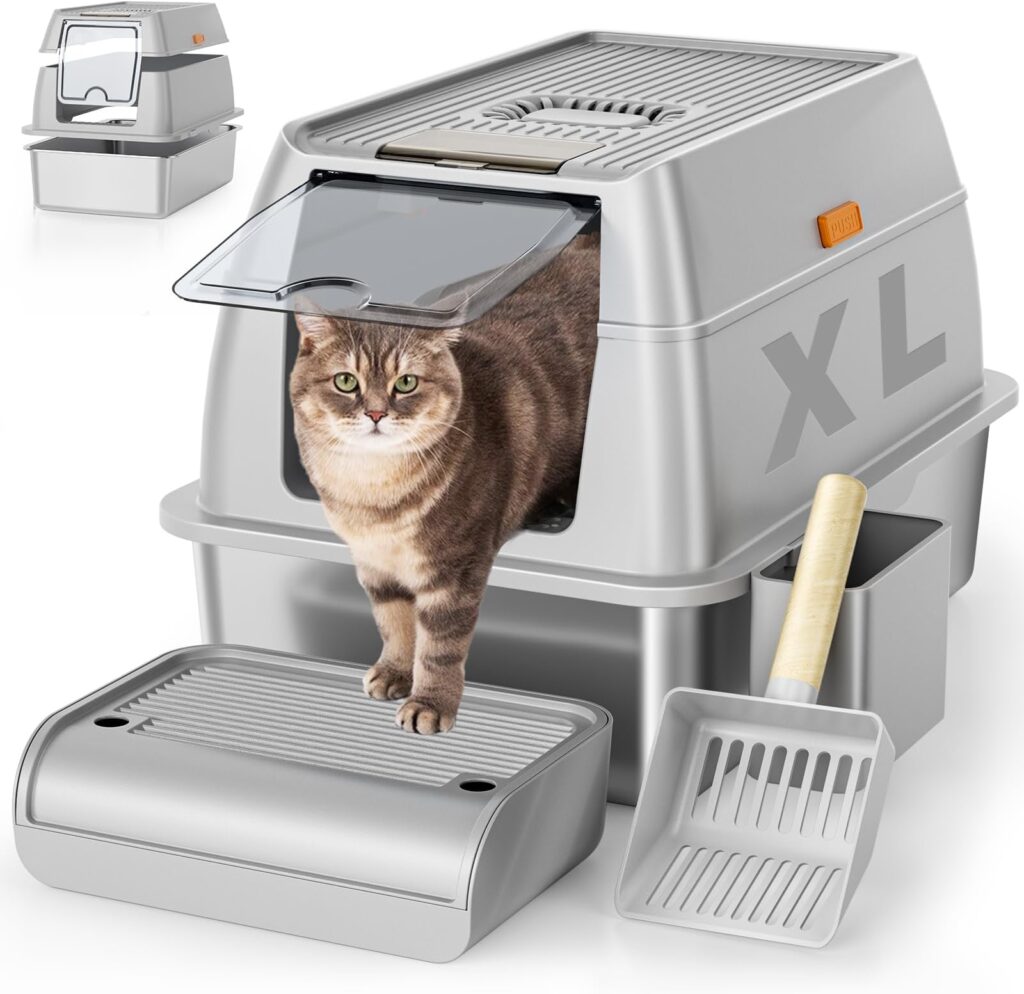🐾 The Hidden Science of a Happy Litter Box Experience
For many cat owners, litter boxes are a necessary evil functional but often messy, smelly, and tucked away in corners. But what if your litter setup could be both hygienic and harmonious? Today’s litter boxes and accessories are engineered not just for waste management, but for odor control, feline psychology, and even interior design. This article dives deep into the overlooked innovations and behavioral insights that make all the difference.
🚽 Beyond the Box: Why Design and Placement Matter
Most articles stop at “choose the right size,” but let’s go further. Cats are territorial and sensitive to environmental stress. A litter box that’s too enclosed, placed near noisy appliances, or located in high traffic areas can lead to avoidance, accidents, and stress related behaviors.
Key insights:
- Open vs. Covered Boxes: Covered boxes may trap odors but can also trap anxiety. Studies from feline behaviorists suggest that open boxes reduce stress and encourage consistent use.
- Multi-cat Homes: The “n+1 rule” (one box per cat, plus one extra) isn’t just a guideline it’s a behavioral necessity to prevent territorial disputes and litter box bullying.
🧼 Odor Control: The Real MVPs of Cat Hygiene
Odor control isn’t just about masking smells it’s about preventing bacterial buildup and ammonia exposure, which can harm both cats and humans. Here’s what actually works:
- Activated Charcoal Liners: These neutralize odors at the molecular level, outperforming scented litters that merely mask smells.
- High-Sided Boxes with Anti-Stick Coatings: These reduce scatter and make cleaning easier, minimizing lingering odors.
- Automatic Scooping Systems: While pricey, they offer consistent cleanliness and are ideal for busy households. Look for models with carbon filters and sealed waste compartments.
🧪 Cat Litter Accessories: Innovation Meets Insight
Accessories are no longer gimmicks they’re strategic tools. Consider:
| Accessory | Function | Why It Matters |
|---|---|---|
| Litter Mats | Trap granules | Keeps floors clean, reduces tracking |
| Litter Box Enclosures | Hide boxes in furniture | Improves aesthetics, reduces odor spread |
| Litter Deodorizers | Neutralize smells | Choose unscented, enzyme-based options |
| Monitoring Sensors | Track usage | Early detection of health issues like UTIs or constipation |
Emerging tech like smart litter boxes now offer usage analytics, alerting owners to changes in frequency or volume early indicators of health problems. This kind of data driven pet care is reshaping how we think about litter boxes.
🐈 The Emotional Payoff: Happy Cat, Happy Home
A well-maintained litter setup isn’t just about cleanliness it’s about trust. Cats are fastidious creatures. When their environment reflects that, they feel secure, respected, and more bonded to their humans.
Final tip: Involve your cat in the process. Let them explore new boxes or accessories before full implementation. Their comfort is the ultimate benchmark.
🧠 Why This Article Is Worth Bookmarking
Unlike generic guides, this piece blends behavioral science, product innovation, and practical design to offer a comprehensive roadmap for litter box success. Whether you’re a first-time cat parent or a seasoned multi-cat household, these insights help you create a space that’s clean, calm, and cat approved.
Available Cats:

